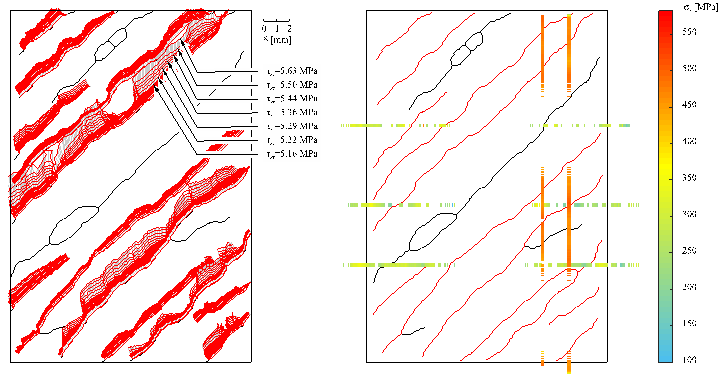Experimental and theoretical investigations of shear transfer across cracks in reinforced concrete panels
Author: Nicola Gehri
Language: English
Abstract
Within the scope of this master's thesis, the behaviour of reinforced concrete panels and in particular the shear transfer across cracks is investigated theoretically and experimentally. A fixed cracked membrane model based on the cracked membrane model from Kaufmann is developed and numerically implemented. The extensions mainly include the modified tension chord model for small strains from Seelhofer and a simplified consideration of the bond shear stress influence on the concrete deformations. Three established aggregate interlock models, developed by means of push-off tests on pre-cracked specimens are examined for their applicability on large-scale panels. The predictions of test results are compared and evaluated with experimental measurements. Hence, three different large-scale panel tests, conducted in the Large Universal Shell Element Tester (LUSET) at the ETH Zurich, are analysed. Two panels with different amounts of reinforcement are tested in pure shear and one specimen is loaded in shear with imposed longitudinal strain. Novel distributed optical instrumentation techniques containing full-field digital image correlation of concrete surfaces and fibre optical measurement of the reinforcement along the entire length of the reinforcing bars allow the determination of deformations, crack kinematics, crack stresses and internal forces in concrete and reinforcement. For that purpose, evaluations of the crack detection and crack measurements, which are based on the results of the digital image correlation, are combined with the measurements of the fibre optical sensors. The comparisons of predicted and measured values show the strengths and weaknesses of several concepts of the fixed crack membrane model and the used aggregate interlock relationships. Additionally, the assessment of experimental results reveals the complexity of data evaluation processes. However, the novel instrumentation techniques have a great potential to increase knowledge in structural concrete in many aspects.

